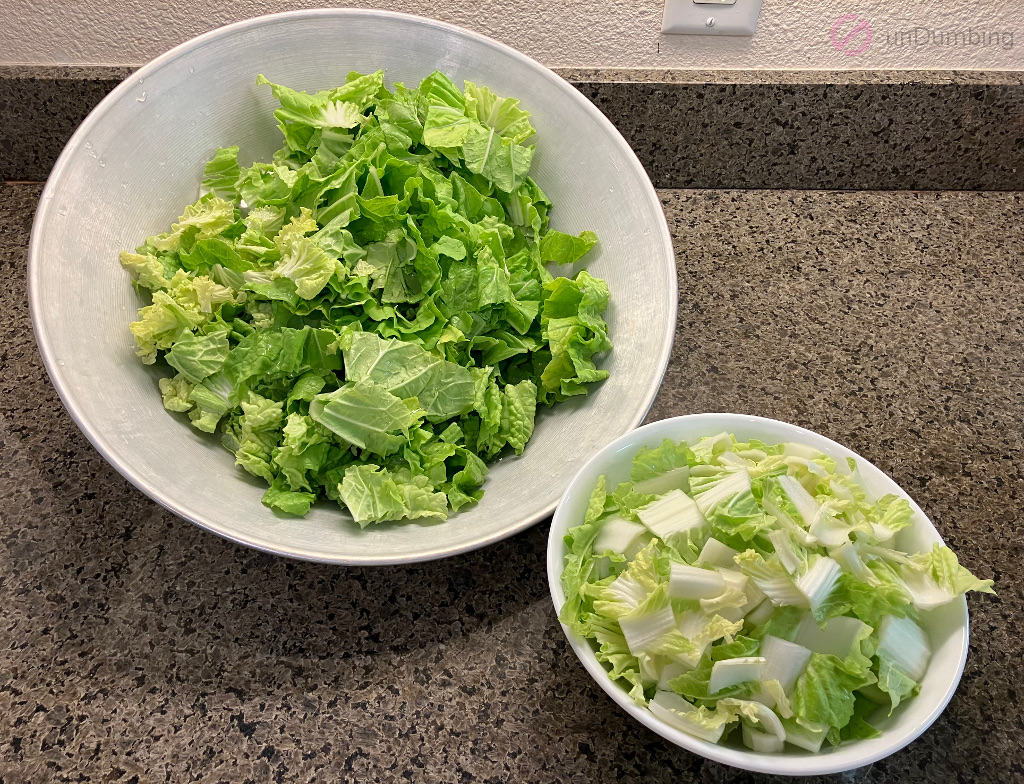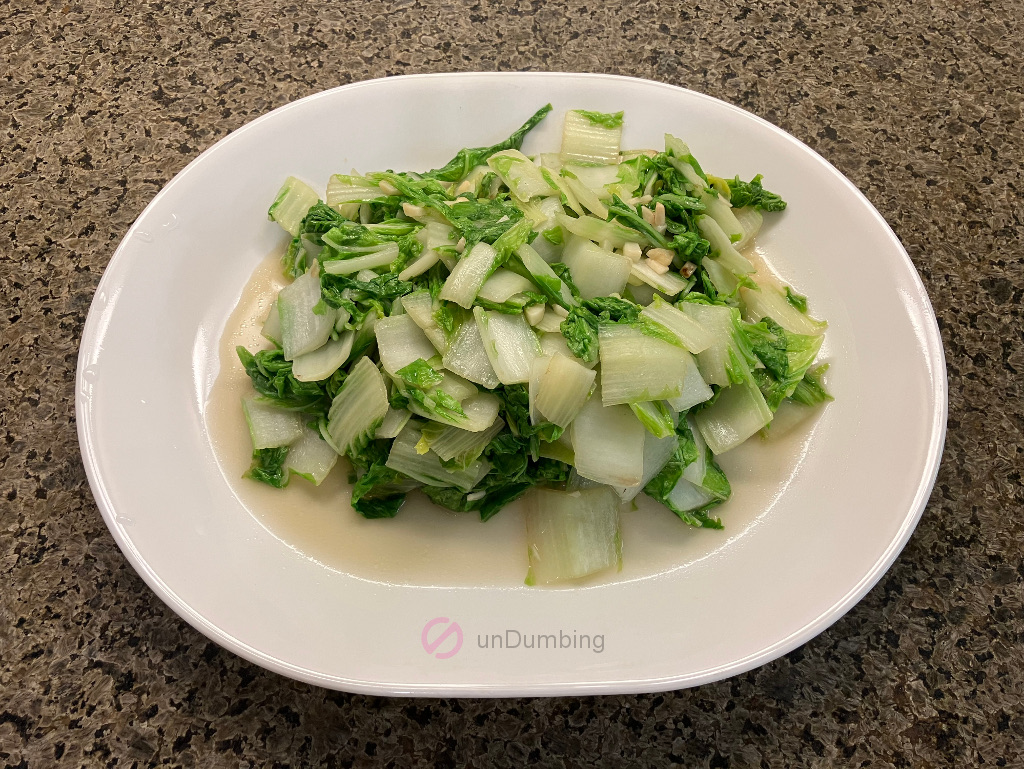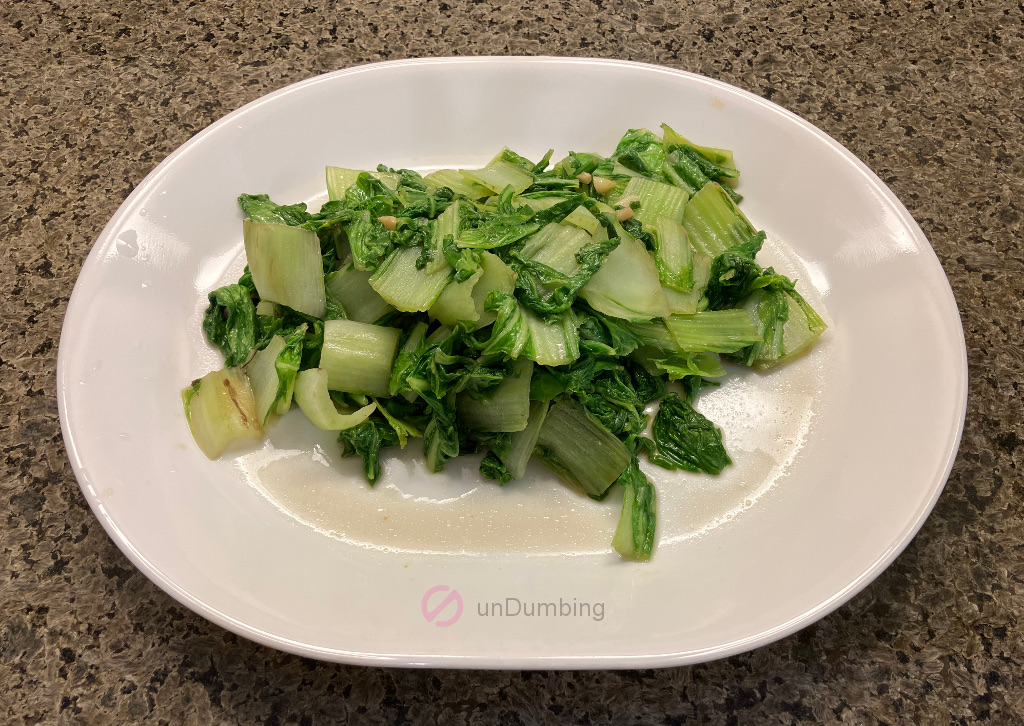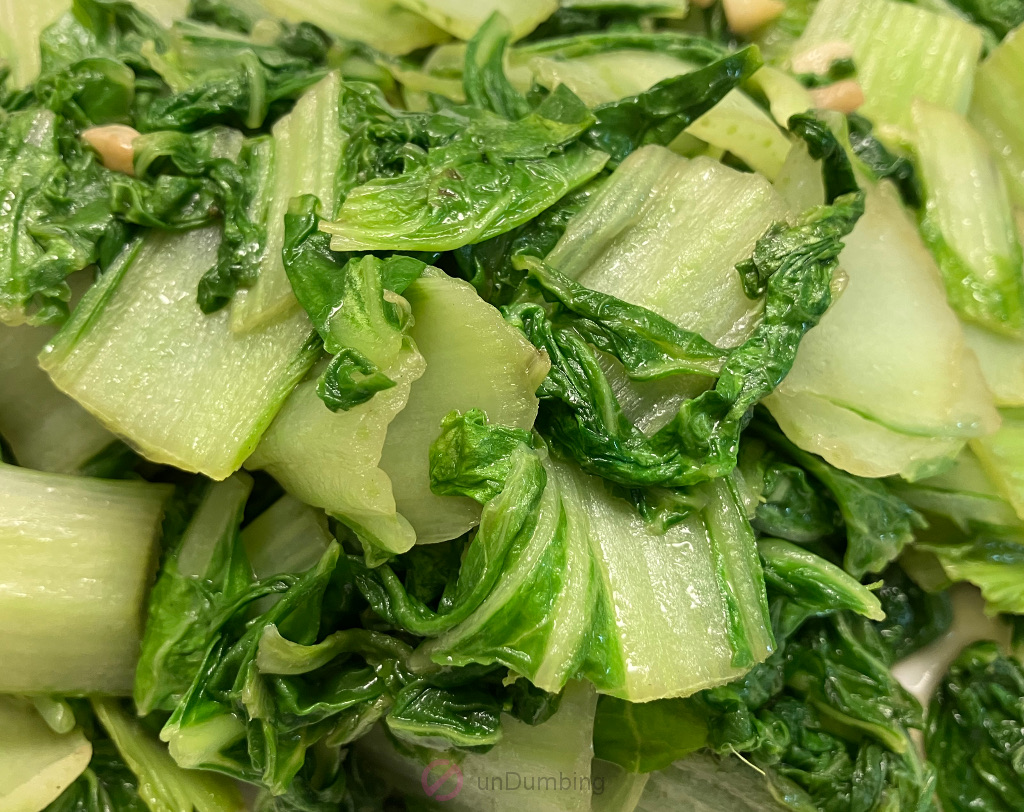I found another vegetable that only needs a few ingredients to enhance its natural flavor and texture.
Below are some links to more details, including photos:
My Story
Taiwan Bok Choy has been on sale at my local supermarket before, but I never figured out what to do with it. One day when it was discounted again, I decided to buy a bag and find a recipe later.
Inspiring Recipe
What I found was the recipe, Taiwan Bok Choy, from the blog, Oh Snap! Let’s Eat! Of all the times that I’ve referenced this website, they were always for ideas to cook vegetables, like the last one documented here.
First Try
Since I had already bought the Taiwan Bok Choy, I just needed to add the supplemental ingredients that were at home.
Ingredients to Use
Starting with only three bunches of Taiwan Bok Choy, I had to decrease the remaining ingredients on the default recipe to the following:
- 1 1/2 tablespoons of oil
- 3 cloves of garlic
- Salt, as desired
For the oil, I chose avocado oil, since that’s what I had in my kitchen.

Steps to Prepare
Of the five steps in the instructions, I tweaked a couple of them as follows:
- Step 1 – Washed the bok choy after cutting off the ends.
- Step 4 – Stir-fried the vegetable for about another 3 minutes, totaling 8 minutes, before everything was tender.
In addition, below are some specifics for the following steps:
- Step 2 – Chose a wok to cook with.
- Step 5 – Sprinkled salt twice across the bok choy and mixed everything for about 1 minute.
Lastly, I kept Step 3 the same as written on the recipe.


Time to Eat
Here was the plate of Taiwan Bok Choy for dinner.

Recipe Rating
Below are the results of the recipe after the first try:
| # of Ingredients | Effort | $ / Serving | Try Again? |
|---|---|---|---|
| 4 |

The Taiwan Bok Choy came out crunchy and lightly salted. For my kids, they enjoyed the abundant soft leaves, though my favorite part was the slightly sweet stalks.
Second Try
For the second round, the only thing I wanted to change was the flavor of the vegetables.
Ingredients to Use
For the ingredients, I kept them the same as they were in the first batch.
Steps to Prepare
Regarding the process, as compared to the first time, I modified only the following steps:
- Step 3 – Stir-fried the white parts of the bok choy for 41 seconds, instead of 1 minute.
- Step 4 – Stir-fried the vegetable for 3 minutes as noted in the recipe, before everything was soft.
- Step 5 – Sprinkled salt across the bok choy three times instead of two.
Time to Eat
Since the bunches of Taiwan Bok Choy were lighter in weight than the first batch, this plate looked more wilted even though it was cooked less.

Recipe Rating
Below are the results of the recipe from the second attempt:
| # of Ingredients | Effort | $ / Serving | Try Again? |
|---|---|---|---|
| 4 |

Like before, the stalks were slightly sweet. As for the leaves, they were chewier than the last time, but overall everything tasted better with the additional salt.
Since I was able to get the flavor the way I liked it, the texture will be what I would work on in the future. By doing the following, I hope that the leaves will be again more delicate on the tongue:
Continuous Improvement
- Experiment with the cooking time.
After my experience with Taiwan Bok Choy, I realized the following that I would like to share with my younger self:
Lesson for Dumber Self
- Purchase a vegetable even if you don’t have a recipe for it. Most likely, you’ll be able to find one afterwards.
What will you do now?
Next Step for You
- Try the recipe, Taiwan Bok Choy, from the blog, Oh Snap! Let’s Eat!?
- Share a tip on how to prevent leaves from becoming chewy?
- Ask a question or leave a note in the Comment box below about this post?


Leave a Reply